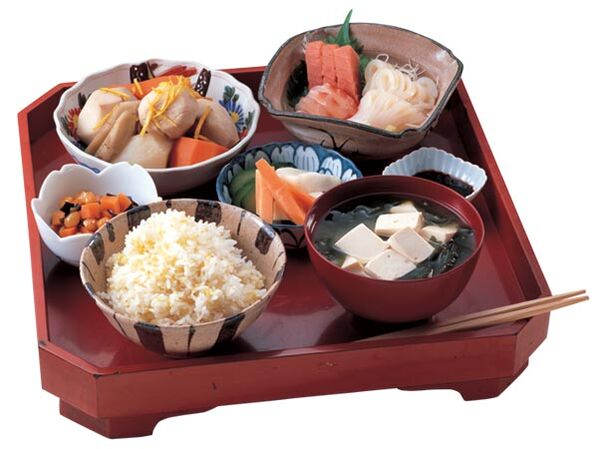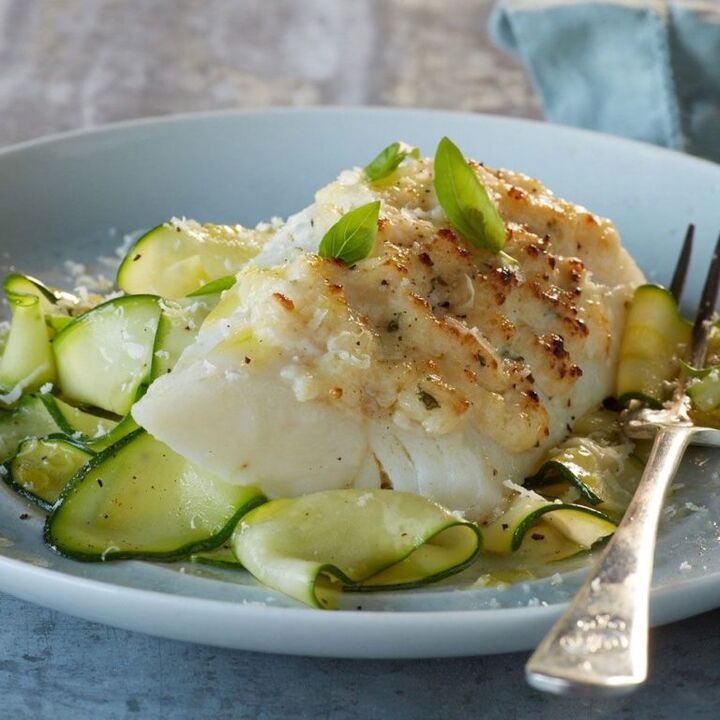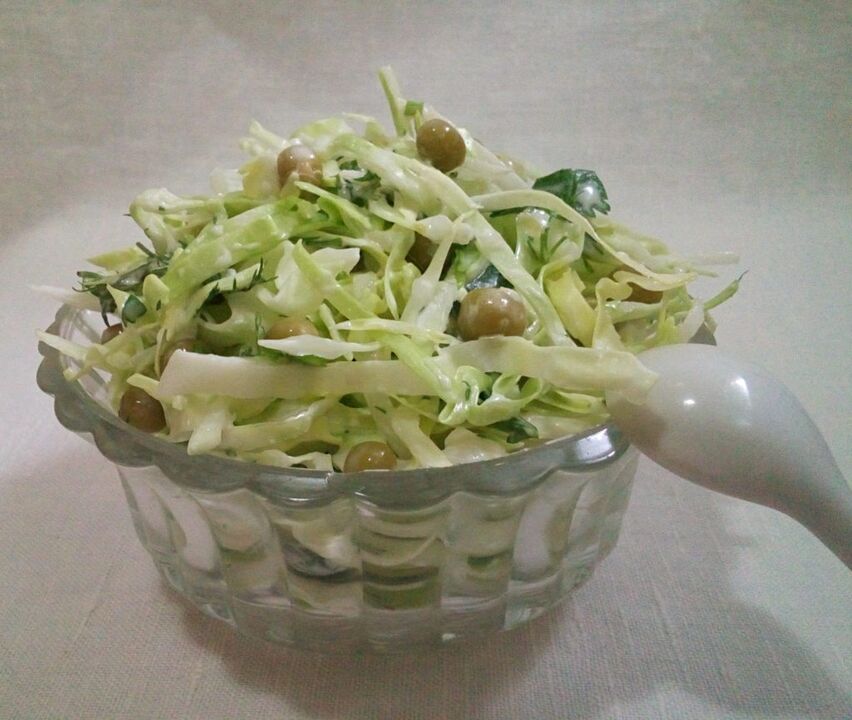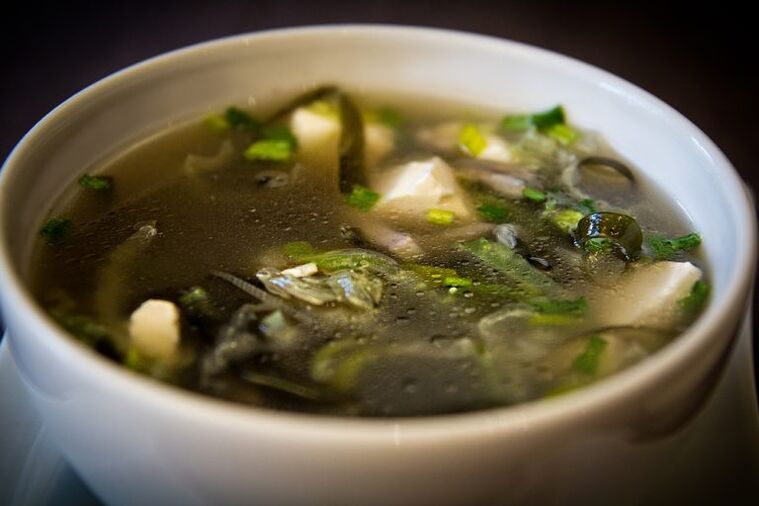
The Japanese 14 Day Diet is one of the most popular weight loss programs developed by the specialists at the Japanese clinic "Yaeks". It has a specific list of products, a simple menu, and an effective methodology that is easy to follow at home.
A strict daily diet requires the observance of several conditions: disciplined eating, avoiding prohibited foods, and drinking plenty of fluids regularly.
The finished table can be printed and hung on the wall.
The Japanese diet lasts for 14 days. The demand for the Japanese diet is explained by the quick results and stable, long-lasting effects: in 2 weeks, with the right approach, you can get rid of 5 or more kilograms of excess weight.
What is the Japanese Diet?
- Duration of the diet:14 days;
- Specialty:strict low-calorie protein diet,
- The approximate cost of the diet:Budget;
- Results of the Japanese Diet: Weight loss by 5-8 kg;
- Recommended frequency:no more than 2 times a year;
- The main advantage of the diet:Preservation of the result for a long time (subject to the correct exit from the diet).
Japanese Diet for 14 Days: What To Expect?
Do not expect a particular variety of the menu - all the foods that are allowed on the Japanese diet for 14 days are familiar to many. This is an undoubted advantage, as the risk of allergic reactions to exotic foods is minimal and recommended foods can be bought with meals in anyone, even the smallest supermarket.
It is not known exactly why this weight loss diet was called Japanese. According to one version, it was developed in a particular Tokyo clinic, according to another, the name was inspired by a simple, straightforward and clear diet regimen that has an inspirational effect (similar to the Japanese way, right? Follow the rules), tryYour best and you will get a reward). . .
In addition, the 14-day Japanese diet, which has established itself among people who lose weight all over the world, is characterized by moderation in both the composition and the calorie content of the recommended foods and thus connects it with the traditional Japanese diet.
Nutritionist Naomi Moriyama from Japan sees the secret of youth and longevity in her compatriots in small portion sizes and a low-carbohydrate diet.
Japanese dietary rules
Even so, unfortunately, moderation is uncommon for many residents of our country, and reducing the amount of calories can become a real problem. In addition, the Japanese weight loss diet has really tough restrictions.
protein
In addition, the main component of the body's energy supply in the Japanese diet is protein, which is obtained from chicken eggs, poultry, lean meat, fish, and dairy products. Carbohydrates can be obtained from some of the approved vegetables, fats from vegetable oils approved for cooking and salad dressings, and from meat and fish.
cellulose
Vegetables and fruits are high in fiber, the amount of which is not particularly regulated on some days of the Japanese diet, allowing the digestive tract to fully cope with its work.
beverages
Coffee and green tea invigorate and contain healthy antioxidants (so it is better to respect high quality tea and coffee, of course, without artificial additives).
A drinking regime is very important in any diet, and Japanese is no exception. Drink plenty of clean, non-carbonated water at room temperature throughout the day to help keep your stomach feeling full and expedite the elimination of processed animal proteins from the body.
Japanese diet for 14 days: the principle of losing weight
The essence of the Japanese diet is expressed in a few words: low in calories, protein, minimal amount of salt. Accordingly, thanks to these three most important principles, the process of losing weight is initiated:
- Protein is able to increase heat production, which speeds up metabolism, which promotes weight loss;
- Due to the restriction of salt in the diet, excess fluid is removed from the tissues, edema is eliminated, pressure is normalized;
- The body receives a small amount of calories. Therefore he has to activate his own reserves;
- The body uses a lot of energy to absorb protein products, which is what causes fat burning.
The diet is suitable for people of all weight classes. If you need to lose 3-4 kg, it is enough to follow a diet for 7 days. If you need to lose weight from 5 kg, then you need to adhere to the Japanese diet for 14 days.
Without contraindications and in the best of health, you can stretch it for a month because, in addition to proteins, it also contains fats (vegetable oil) and carbohydrates (rice).

Japanese diet for 14 days, important points
The most effective diet for rapid weight loss is the Japanese diet. JustDucan's diet, but they have a difference in duration: if Japanese only lasts two weeks, thenDucan's dietwill drag on for months when all phases are completed.
Japanese diet for 14 days: the main principles of dietary nutrition
The Japanese diet was developed about 16 years ago, during which time many people looking to lose weight have appreciated its effectiveness. Diet "Japanese" means a salt-free diet with a significant reduction in carbohydrates.
Three meals a day and plenty of fluids are characteristic of the diet. This diet is suitable for people between the ages of 18 and 40 and has no gender, i. H. the diet is suitable for both men and women.
"Japanese" is based on cutting down on your daily calorie intake and avoiding carbohydrates, especially fast ones. Diet food means avoiding salty, fatty, smoked foods. Products such as alcohol, juices, lemonade and any kind of fast food are also contraindicated during the diet.
Strict adherence to these tips leads to an acceleration of the metabolism, as a result of which excess body fat is burned and converted into energy. The Japanese diet belongs to the class of protein diets. Chicken eggs, rabbit and chicken meat, fish and some dairy products serve as the basis of food.
Of the carbohydrates, only a part of the vegetables may be consumed in small amounts. The prerequisite is the normalization of the water balance, in addition to the fact that losing weight must drink at least 2 liters of pure water, it is also necessary to include green tea, coffee or chicory in the menu.
The basic principles of proper nutrition:
- Individual choice of Japanese diet:for 7 and 14 days. If you are slightly overweight, it is sufficient to adhere to the diet for 7 days. If you are overweight, it is better to follow the Japanese diet for 14 days. Reviews show that the weight loss in the first case is about 6 kilograms, in the second case up to 10 kilograms;
- Strict adherence to the diet:the products offered cannot be replaced by alternatives. Tomato juice can be used instead of a tomato, white cabbage instead of spinach;
- Strictly Sugar Free:under a categorical ban all refined carbohydrates, desserts, pastries and flour products, honey;
- Gradual entry and exit from the Japanese diet is required.The results are less noticeable in those who switch from another diet to this diet. And they are clearly visible if the pre-meals were not dietary. In the case of a full-fledged diet on the eve of the "Japanese woman", you should plan a day of fasting (kefir or apple) or at least prepare a light dinner (a little cooked brown rice with a salad of fresh vegetables). As you step out, you should introduce daily essentials gradually, about 1 per week;
- Mandatory salt-free:the salt-free Japanese diet aims to remove excess fluid from the body, as a result of which up to 30% of excess weight is lost;
- Prohibition of exceeding deadlines.It is categorically impossible to continue dieting food for more than 14 days, because of the danger to the body;
- Sufficient amount of fluid is required:during the day you should drink 2 liters of still water. Tea (you can drink green) and coffee are not included in this volume;
- Strict adherence to the order:the Japanese diet, the menu of which was developed with the aim of gradual weight loss and long-term maintenance of the result, does not tolerate changes to the proposed diet. It is impossible to rearrange the places of the day and the menu for breakfast, lunch and dinner.
Pros and cons of the 14-day Japanese diet
Benefits of the Japanese Diet:
- Reduces the risk of cardiovascular disease (also due to a decrease in the salt content in food);
- Sustained results with proper diet exit (i. e. you will not regain the pounds you lost);
- Availability of the products prescribed in the menu - no exotic ones;
- Minimal salt intake reduces swelling;
- Protein products prevent the skin from stretching and sagging after slimming;
- You can use different methods of cooking dishes: not just steaming, stewing or boiling - they can even be fried without excluding vegetable oil from the diet;
- Vegetable food provides the body with the necessary vitamins and microelements;
- Significant weight loss.
Cons of the Japanese Diet:
- Three meals a day without snacks does not conform to the principles of healthy weight loss if the meals are fractionated up to 5-6 times a day;
- There are many contraindications;
- The frequency of application of the diet is only 1 time in 6 months;
- The low average daily calorie content of food is only 800 kcal, which is not enough for those who are used to physical and mental activity;
- Dehydration of the body is possible;
- Every morning you have to start with a cup of black coffee on an empty stomach, which not every heart and stomach can withstand;
- The wrong way out of the diet is fraught with rapid weight gain;
- The diet is not completely balanced, as there is a clear excess weight towards proteins at the expense of carbohydrates and fats;
- Because of such a diet, by the end of the diet, many feel dizzy, decreased performance, drowsiness, and weakness are observed.
A small daily number of meals (only 3 instead of 5-6 healthy ones) and the lack of snacks can prove to be difficult for the Japanese diet, prepare for them. It is recommended to have dinner at least 2 hours before bedtime and start the morning with a glass of water - this will stimulate the metabolism and allow you to better endure the absence of breakfast.

List of staple foods for the Japanese diet for 14 days
- Fresh chicken eggs - 2 dozen;
- Chicken fillet - 1 kg. ;
- Fresh carrots - 2-3 kg. ;
- Tomato juice - 1 l. ;
- Quality coffee beans or ground coffee - 1 pack;
- White cabbage - 2 medium-sized forks;
- Fruit (except bananas and grapes) - 1 kg. total;
- Selected lemons - 2 pcs . ;
- Sea fish fillet - 2 kg. ;
- Zucchini, eggplant - 1 kg. total;
- Kefir - 1 l. (buy fresh, do not keep for later use! );
- Lean beef, pulp - 1 kg. ;
- Extra virgin olive oil - 500 ml. ;
- Your favorite green tea (without additives or flavorings) - 1 pack.
List of prohibited foods on the Japanese diet
In the Japanese diet, you shouldn't eat foods like:
- Alcohol and carbonated water;
- Baked goods made from white flour;
- Ready meals and fast food;
- Confectionery;
- Salt;
- fatty meat and fish;
- Bananas, grapes, persimmons;
- Sugar;
- Starchy vegetables;
- Sauces, condiments and other condiments;
- Sweetheart.
14 Day Japanese Salt Free Diet: List of Allowed Foods
Dishes made from fish or animal meat with a side dish of vegetables are very popular and are eaten by many people on a daily basis. It is psychologically difficult for people to do without spices, especially salt, and various types of confectionery in the form of baked goods, confectionery and sweets.
Forcing yourself to forget about sweets and snacks for a week or two is a problem. It would be trainable, many should clean their bodies before starting a diet and temporarily switch to a proper diet without salt.
Allowed weight loss products on the "Japanese":
- Dark bread rusks;
- Kefir or yogurt, preferably homemade plain;
- It is advisable to use tomato juice that is homemade or purchased with pulp. Ordinary packaged juice contains salt, which is forbidden;
- Hard cheese, low fat;
- Natural coffee;
- Sea fish, beef, chicken, boiled or steamed;
- Chicken or quail eggs, raw or cooked (hard-boiled);
- Zucchini, eggplant, parsnip root fried in oil;
- Unsweetened fruits, mostly apples, pears, citrus fruits;
- Green tea with no additives or flavorings;
- Mineral water or purified water without gas;
- Lemon, the juice of which can be added to dishes to improve the taste;
- Vegetable oil - olive or unrefined sunflower oil;
- Fruits: cherries, apples, kiwi, citrus fruits, pears, plums;
- Fresh vegetables: cabbage and carrots, raw and cooked. You can eat it whole, in pieces, or chopped or grated.
Food and spices that are not on this list are considered prohibited. Fruits such as grapes and bananas are also prohibited.
From drinks, sodas, juices, soda, alcohol of any strength are prohibited. A categorical taboo on various sauces, spices, marinades.
Japanese diet for 14 days: menu
The Japanese diet has a 14 day menu for each day and the scheme is currently popular. It attracts the people with its low cheapness while the duration of the diet is only 2 weeks.
A noticeable result at the end of the period, which continues after the correct breakdown of the diet. Unfortunately, you will have to be patient to overcome the two week diet, but it will be worth it.
1 day Japanese diet
- Breakfast:Coffee without sugar and milk.
- Dinner:2 boiled eggs, boiled cabbage with vegetable oil and a glass of tomato juice.
- Dinner:200 g of boiled or fried fish.
Day 2 of the Japanese Diet
- Breakfast:a slice of rye bread and coffee without sugar.
- Dinner:200 g of boiled or fried fish with boiled cabbage and vegetable oil.
- Dinner:100 g of boiled beef and a glass of kefir.
Day 3 of the Japanese Diet
- Breakfast:a slice of rye bread, dried in a toaster, or unleavened biscuit without additives, coffee without sugar.
- Dinner:Zucchini or eggplant, fried in vegetable oil, in any amount.
- Dinner:200 g unsalted boiled beef, raw cabbage in vegetable oil and 2 boiled eggs.
Day 4 of the Japanese Diet
- Breakfast:a small fresh carrot with the juice of a lemon.
- Dinner:200 g of boiled or fried fish and a glass of tomato juice.
- Dinner:200 g of any fruit.
Day 5 Japanese Diet
- Breakfast:a small fresh carrot with the juice of a lemon.
- Dinner:boiled fish and a glass of tomato juice.
- Dinner:200 g of any fruit.
6 days Japanese diet
- Breakfast:sugar-free coffee.
- Dinner:unsalted boiled chicken 500 g with fresh cabbage and carrot salad in vegetable oil.
- Dinner:fresh small carrots and 2 boiled eggs.
7 days Japanese diet
- Breakfast:Green tea.
- Dinner:200 g of unsalted boiled beef.
- Dinner:200 g of fruit or 200 g of boiled or fried fish or 2 eggs with fresh carrots in vegetable oil or boiled beef and 1 glass of kefir.
8 days Japanese diet
- Breakfast:sugar-free coffee.
- Dinner:500 g of boiled chicken without salt and a salad of carrots and cabbage in vegetable oil.
- Dinner:fresh small carrots with vegetable oil and 2 boiled eggs.
Day 9 Japanese Diet
- Breakfast:medium-sized carrot with lemon juice.
- Dinner:200 g of boiled or fried fish and a glass of tomato juice.
- Dinner:200 g of any fruit.
10 days Japanese diet
- Breakfast:sugar-free coffee.
- Dinner:50 g cheese, 3 small carrots in vegetable oil and 1 boiled egg.
- Dinner:200 g of any fruit.
11 days Japanese diet
- Breakfast:Coffee without sugar and a slice of rye bread.
- Dinner:Zucchini or eggplant, fried in vegetable oil, in any amount.
- Dinner:200 g of boiled beef without salt, 2 boiled eggs and fresh cabbage in vegetable oil.
12 days Japanese diet
- Breakfast:Coffee without sugar and a slice of rye bread.
- Dinner:200 g of boiled or fried fish with fresh cabbage in vegetable oil.
- Dinner:100 g of boiled unsalted beef and a glass of kefir.
13 days Japanese diet
- Breakfast:sugar-free coffee.
- Dinner:2 boiled eggs, boiled cabbage in vegetable oil and a glass of tomato juice.
- Dinner:200 g of boiled or fried fish in vegetable oil.
14 days Japanese diet
- Breakfast:sugar-free coffee.
- Dinner:boiled or fried fish 200 g, fresh cabbage with olive oil.
- Dinner:200 g of boiled beef, a glass of kefir.
Get out of the Japanese diet
The first week after you quit the Japanese diet is a very crucial time. At this point, the body continues to lose weight and adapt to new conditions. It is therefore important not to rush into food, but rather slowly incorporate familiar foods into the diet. They just have to be natural.
In order for the achieved result to take hold, you should gradually abandon the diet. The exit period should be twice as long.
The withdrawal period from the 14-day Japanese diet should therefore last at least 28 days - i. e. 4 weeks:
- Eat fractionated (5-6 times a day);
- Eat porridge (buckwheat, oatmeal, rice) and omelets boiled in water for breakfast. Your serving should be around 200 g;
- Replace a fruit meal with a full meal of vegetables and proteins (e. g. 200g vegetable stew and steamed chicken schnitzel);
- Salt should be gradually added to food: at the beginning of the output, do not consume more than 5 g of salt per day;
- Do not reduce the amount of protein foods;
- During the day, you need to prepare 2-3 snacks from fermented dairy products and fruits.
- In the first week, gradually increase the consumed portions of meat and fish dishes - by 50 g, vegetables - by 100 g.
Approximate menu for leaving the Japanese diet for 2 weeks
Day 1-3 Leaving the Japanese diet
- Breakfast:Omelette made from 2 eggs and 150 ml. Milk (2. 5% fat), 1 loaf, black coffee.
- Dinner:200 g boiled beef or 200 g baked cod, 100 g fresh vegetables.
- Dinner:100 g of cottage cheese (5% fat) or 250 ml. Kefir (2. 5% fat) and 1 apple.
Day 4-6: Get out of the Japanese diet
- Breakfast:200 g of oat flakes in water (without sugar and oil).
- Snack:1 orange, 1 kiwi.
- Dinner:200 g of baked chicken breast, 100 g of fresh vegetables (cabbage, carrots, peppers).
- Dinner:200 g of boiled shrimp or 150 g of cottage cheese (7% fat), 1 cucumber.
Day 7-10: Leaving the Japanese diet
- Breakfast:200 g oat flakes in water without sugar and butter, 2 toasts (20 g each).
- Snack:1 fruit of your choice.
- Dinner:200 g vegetable soup, 100 g boiled beef.
- Snack:100 g natural yogurt.
- Dinner:200 g baked chicken breast, 150 g steamed vegetables.
Day 11-14 comes from the Japanese diet
- Breakfast:200 g porridge with nuts, dried fruits and honey (no more than 1 teaspoon), 2 toasts (20 g each).
- Snack:1 fruit of your choice, 100 g natural yoghurt or cottage cheese (5% fat).
- Dinner:200 g of any soup in low-fat chicken broth, 150 g of boiled chicken breast, 2 fresh cucumbers.
- Snack:1 fruit of your choice or 150 g plain yogurt.
- Dinner:200 g of boiled mussels, 150 g of vegetable stew;
- Snack:200ml. Kefir (2. 5% fat).
Delicious Japanese diet recipes
To make the diet as easy as possible, we recommend that you use these recipes for simple and tasty dishes that will enable you to get through this weight loss marathon to the bitter end. Do not forget that it is necessary to completely abandon salt.

Recipe 1. Baked fish
This dish is suitable for any diet.
Ingredients:
- Cod fillet - 300 g;
- Zucchini - 100 g. ;
- Soy sauce - 50 ml.
How to cook:
- Cut the fillets into sufficiently large pieces;
- Marinate in sauce for 3 hours;
- Cut the zucchini into slices. Let rest for half an hour, drain the juice;
- Put the fish in the sleeve over it - zucchini;
- Pour the remaining marinade over it;
- Tie the sleeve, make several punctures;
- Bake in the oven preheated to 180 ° C for half an hour. Ready!

Recipe 2. Cooked coleslaw
This salad is a staple in the Japanese diet.
Ingredients:
- White cabbage - 200 g;
- Canned green peas - 30 g;
- Vegetable oil - 30 ml . ;
- Parsley - to taste;
- Dill to taste.
How to cook:
- Cook cabbage leaves until soft (30 minutes);
- Chill them;
- Cut into small strips;
- Stir in butter, peas and chopped herbs. Ready!

Recipe 3. Diet soup
The soup recipe is perfect for salt-free or rice dishes.
Ingredients:
- Pollack fillet - 300 g;
- Water - 1, 5 l. ;
- Egg - 1 pc . ;
- Onion - 1 pc . ;
- Sea kale - 150 g;
- Soy sauce - 50 ml . ;
- Rice - 100 g.
How to cook:
- Chop the onion, marinate in the sauce for 3 hours;
- Half-boil rice, add fish, cut into pieces, cook until soft;
- Chop the seaweed, add to the soup;
- Put the pickled onions in the same place, but without the marinade;
- Slowly pour the scrambled eggs into the soup in a thin stream, stirring constantly;
- Take off the stove immediately;
- It can be served both cold and hot. Ready!
The Japanese diet allows food to be fried as a cooking method, but we chose these recipes because steaming, boiling, and stews all contribute to weight loss even faster.
Japanese dinner. In the evening, the Japanese can eat dishes such as rice with furikake (dried mixture), seaweed, red fish, miso soup, salad, steamed vegetables, green tea.
Japanese diet: contraindications
The Japanese method is intended for people without health problems. With serious illnesses, it is better to refrain from a strict diet.
The Japanese diet is contraindicated in pregnancy and lactation, as well as in people with chronic conditions such as gastritis, peptic ulcer, liver disease, kidney disease, and heart disease. It is recommended to consult a specialist before starting a dietary meal.
The main contraindications are:
- Inflammatory processes;
- Diseases of the gastrointestinal tract (gastritis, ulcers);
- Breastfeeding;
- Kidney failure;
- Cholecystitis;
- Viral infections;
- Hepatitis;
- Cholelithiasis;
- Increased emotional, mental, physical stress;
- HIV and AIDS;
- Hypertension;
- Chronic illness;
- Neuralgia;
- Diabetes mellitus;
- Climax;
- Ages under 18 and over 55;
- Obesity.
The Japanese weight loss diet is recommended for healthy people to correct their shape and shed a few extra pounds. Obese people need a thorough examination under the supervision of a specialist and a special diet. It is strictly forbidden to follow diets and make radical dietary changes even for people with obesity. Possible negative consequences: metabolic disorders, sharp increase in body weight. Any diet for obese patients is prescribed only by the attending physician.
If side effects such as dizziness, palpitations, abdominal pain, dry lips and skin occur, it may indicate dehydration and dysfunction. You should stop the diet and be sure to consult a doctor to avoid complications.
Should You Follow the Japanese Diet? Everyone has to answer this question independently. Rave reviews on the Internet can push you to make a decision, but do not forget about the individual characteristics of the body. People with chronic illnesses should be treated with caution.
While dieting, remember that you need to listen carefully to your body.
The rapid loss of weight and the ability to maintain it require a whole series of measures that require motivation, strict discipline and constant adherence to the correct regimen. Be slim and healthy!













































































